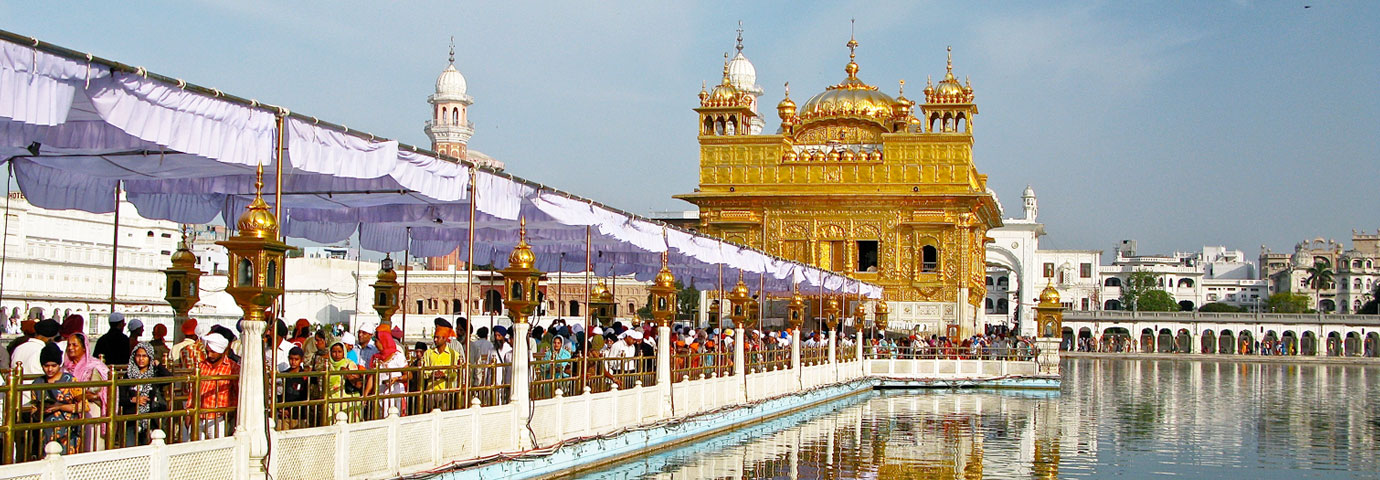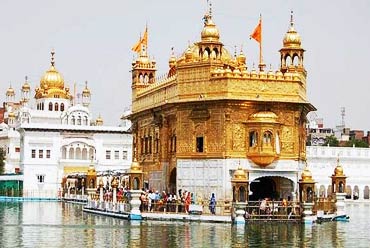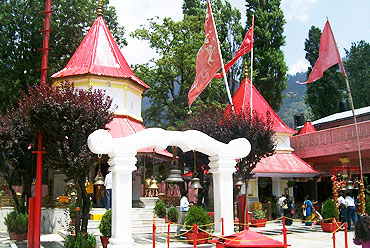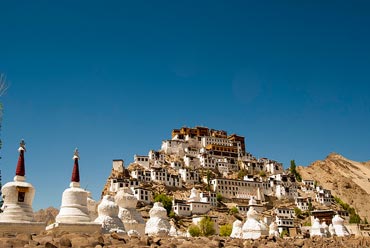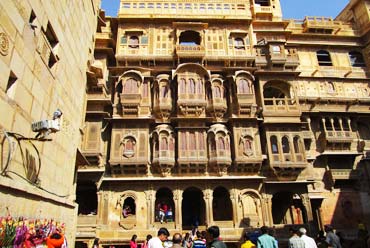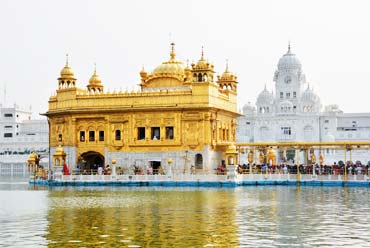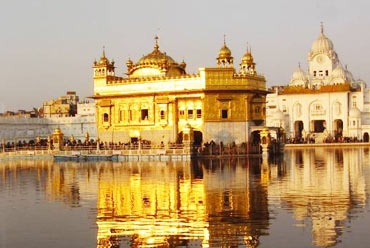Tourist Attractions in Amritsar
Like other Sikh religious sites in India, the Golden Temple stands there in simple majesty, the gilded splendor of its paneling, dome and minarets shining in the morning light, silhouetted softly in the water and etched gently across the city escape. For the Sikh community the Harmandir Sahib Gurdwara Golden Temple is the final spiritual "vision," journey's end or beginning and, for every other community too, it is a shrine to be visited.
The Golden Temple in Amritsar is the most exalted of all Sikh shrines, drawing pilgrims from near and far fore centuries. The temple's story began some four centuries ago when the third Sikh Guru Amar Das asked Guru Ram Das (who succeeded him) to build a central place for the congregation of the Sikhs. Guru Arjan Dev completed the work started by Guru Ram Das in the 16th century. The gurdwara has four entrance doors, called deoris, in all four directions-symbolic of the new faith that made no distinction between caste and creed. People could enter and bow in any direction they preferred.
As one descends into the temple (unlike most temples, here one actually descends as the structure is built below the level of the surrounding area), one is confronted by the stunningly beautiful sanctum sanctorum glimmering in the water of the holy tank that is flanked on all four sides by spotlessly clean marble walkways and pavements.
The main structure rises from the center of the sacred pool and is approached by a long causeway. The 52-meter, square-based Hari Mandir stands on a square platform, its lower parts marble, and its upper portion fully covered with plates of gilded copper. In the interior, on the ground, the Guru Granth Sahib (holy book of the Sikhs) is placed under a jewel-studded canopy. On the first floor is a small pavilion called the Shish Mahal (mirror room). It is ornamented with pieces of mirrors inlaid in the ceiling and walls. Above is another smaller pavilion. Exquisite murals adorn the walls of the pavilions, but other than that, the emphasis is on simplicity.
Situated at the other end of the causeway connected to the Harmandir Sahib is the Akal Takht. Literally, it means the eternal throne and its building opposite the temple has a significance. While the temple stands for the spiritual guidance, the Akal Takht symbolizes the dispensing of justice and temporal activities. During the day, the Guru Granth Sahib is kept in the temple and at night at the Akal Takht. Traditionally all Sikh warriors sought blessings here before going for war.
As it has done for several centuries, the temple mirrors many images that are dear to the devout. One sees the beautiful golden dome shimmering in the water. One sees thousands of devotees praying and kneeling before the holy book. One sees them touch the holy water and pour it over their foreheads. One sees people streaming into the langar hall to partake of the common meal served lovingly to all. Forming a soothing and beautiful soundtrack to all these activities is the continuous kirtan (devotional) recitation that has provided solace to so many.
If you take a short walk around the Golden Temple, you can visit several other Gurdwaras that trace their links with the Gurus. Gurdwara Baba Atal Sahib and the Shahidi martyr's shrine are important religious centers, each with its own history.
Amritsar played a pivotal role in India's quest for independence, and no national monument has more significance than Jalianwala Bagh, a solemn, grim reminder of one of the bloodiest chapters of India's freedom movement. The 2000 Indians killed and wounded here in the indiscriminate firing by the British on Baisakhi in 1919 was carnage that had nationwide ramifications, shaking and enraging the whole country. Jalianwala Bagh commemorates the martyrs, keeping the tragic episode in its historical context. Today, one finds a small gallery with photos of key personalities involved, the well into which the crowds jumped to escape the murderous hail of bullets and a simple memorial at the site that shaped India's destiny.
Places Around Amritsar
Within an hour's drive from Amritsar are several Sikh religious sites to visit. Several historical Gurdwaras like Baba Bakala, Goindwal Sahib, Tarn Taran, and Baba Sahib, attract the devout. The drive takes one through the heart of rural Punjab with lush green paddy fields, tiny villages, and robust farmers.
The Amritsar that greets visitors today is a bustling, busy city with a distinct 'frontier' atmosphere, nestling as it does within breathing distance of the Indo-Pakistan border.
A popular outing is to the Wagah checkpost on the Indo-Pakistan border where crowds throng to see the change of guards ceremony and the flag hoisting and lowering, all done with great skill and precision.

